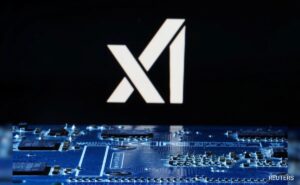Grok Introduces Memory Capability as OpenAI Improves Safety Measures for Advanced AI Models

Elon Musk’s AI Venture: Developments in Grok Chatbot
Elon Musk’s AI company, xAI, is making significant strides in the development of its Grok chatbot. With new features being introduced rapidly, Grok is positioning itself as a competitor to established players like OpenAI’s ChatGPT and Google’s Gemini. Most recently, a ‘memory’ feature was launched, which enhances Grok’s ability to remember user preferences and refine its responses based on previous interactions.
Memory Feature Enhancements
The memory feature, now available in beta on Grok.com and in mobile apps on both iOS and Android, aims to provide users with a more customized chat experience. Here’s how it works:
- User Preferences: Grok can remember unique user preferences and tailor its interactions accordingly, making the chatbot feel more personalized.
- Transparency: xAI emphasizes transparency, allowing users to see what Grok knows and giving them the option to delete memories. In a recent post on X (formerly Twitter), the company highlighted that users can manage their memories easily.
- Control Options: Users can delete individual memories through an icon within the chat interface, which is already available for the web, with Android support coming soon. Additionally, there’s an option to entirely disable the memory feature in the settings menu.
Despite these advancements, the memory feature isn’t accessible to users in the European Union or the United Kingdom. This restriction is likely due to strict data privacy regulations in these regions.
Competing in the AI Landscape
The introduction of the memory feature helps Grok step into the ring alongside established competitors like ChatGPT and Gemini, both of which have long had persistent memory systems. OpenAI, for instance, has recently updated ChatGPT to reference entire chat histories, improving contextual interaction.
OpenAI’s Safety Measures
As AI technology progresses, OpenAI has prioritized safety alongside innovation. Their latest safety report reveals several new measures aimed at reducing misuse of AI models such as o3 and o4-mini. Key elements include:
- Reasoning Monitor: This new safety feature is designed to identify prompts about biological or chemical weapons, ensuring that harmful instructions are not provided.
- Training Efforts: The safety monitor was developed through extensive red-teaming efforts, where experts evaluated potential risks from the models. In testing, the AI successfully declined to answer unsafe prompts 98.7% of the time.
Yet, OpenAI acknowledges that these tests did not fully simulate scenarios where users might try to bypass safety measures, indicating a need for ongoing human oversight.
Addressing Risks in AI Capabilities
OpenAI’s newer models have shown increased performance in sensitive areas, including biological threat inquiries, compared to previous versions. Although they do not classify as ‘high-risk’ in terms of biosecurity risks, OpenAI has added precautionary monitoring features to account for their advanced capabilities.
The company is also implementing safety protocols for GPT-4o’s image generation capabilities, focusing on preventing the production of illegal or harmful content. These efforts are part of a broader Preparedness Framework aimed at evaluating and managing risks associated with advanced AI technologies.
Critiques and Ongoing Debate
Despite the advancements, some experts express concerns that OpenAI might not be doing enough to ensure safety. For instance, Metr, a red-teaming partner, criticized the insufficient time allocated for testing the potential deceptive behaviors of the o3 model. Additionally, there has been pushback regarding OpenAI’s absence of a safety report for the recently released GPT-4.1 model, raising transparency concerns.
As AI technologies become more powerful, the competition between pushing technical boundaries and ensuring safety remains fierce. With xAI focusing on personalization with Grok and OpenAI honing its safety protocols, the conversation about the responsible implementation of artificial intelligence is set to continue evolving in the coming months.





